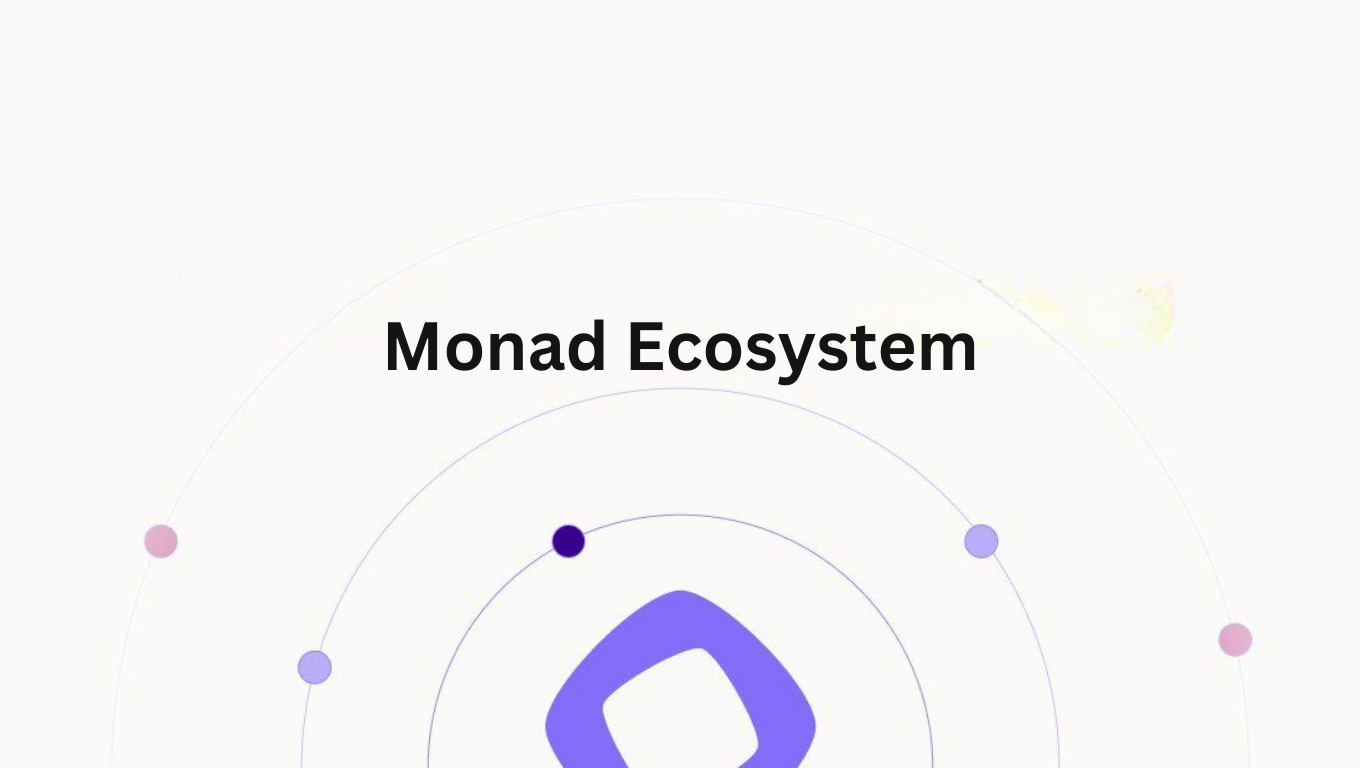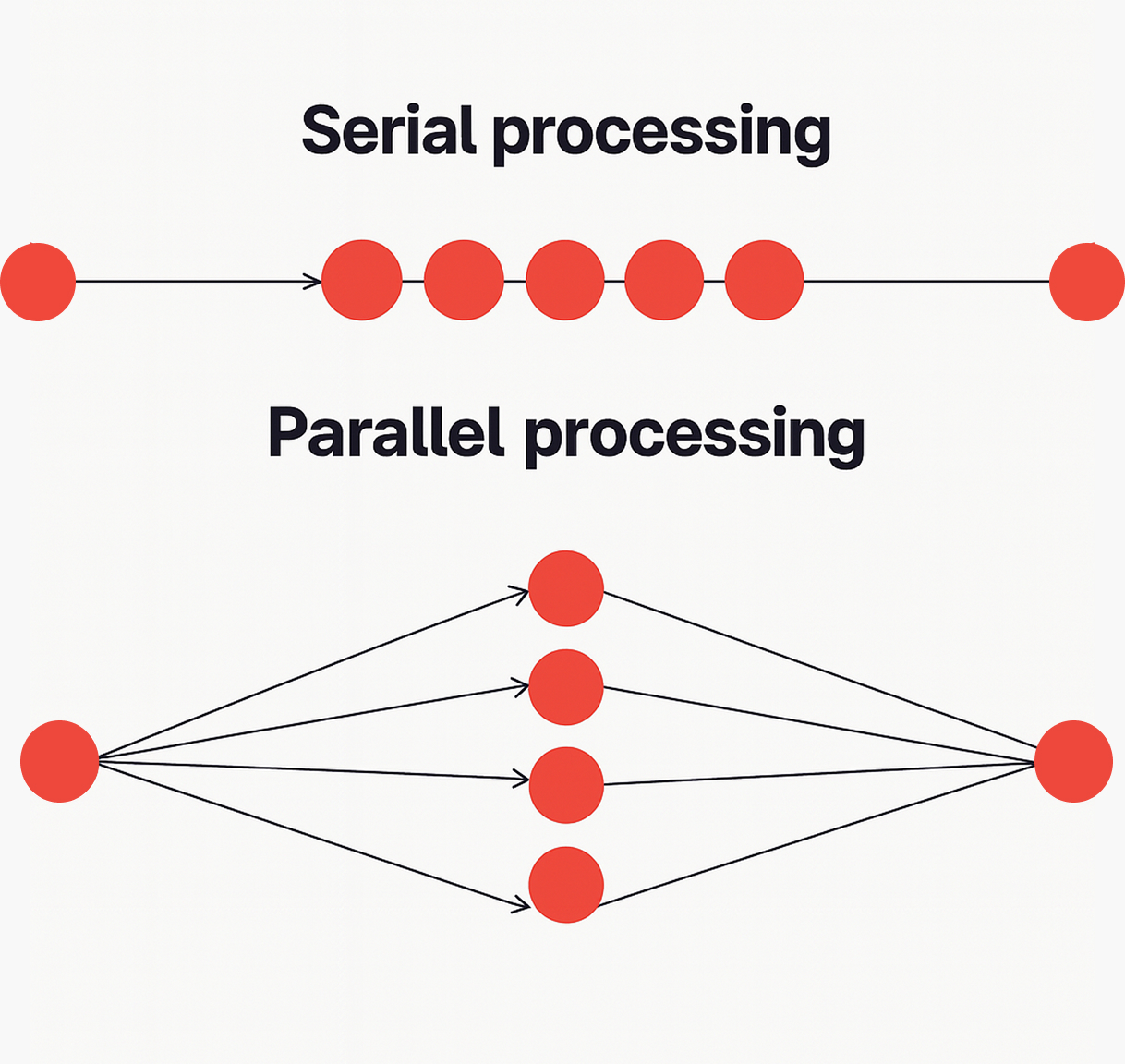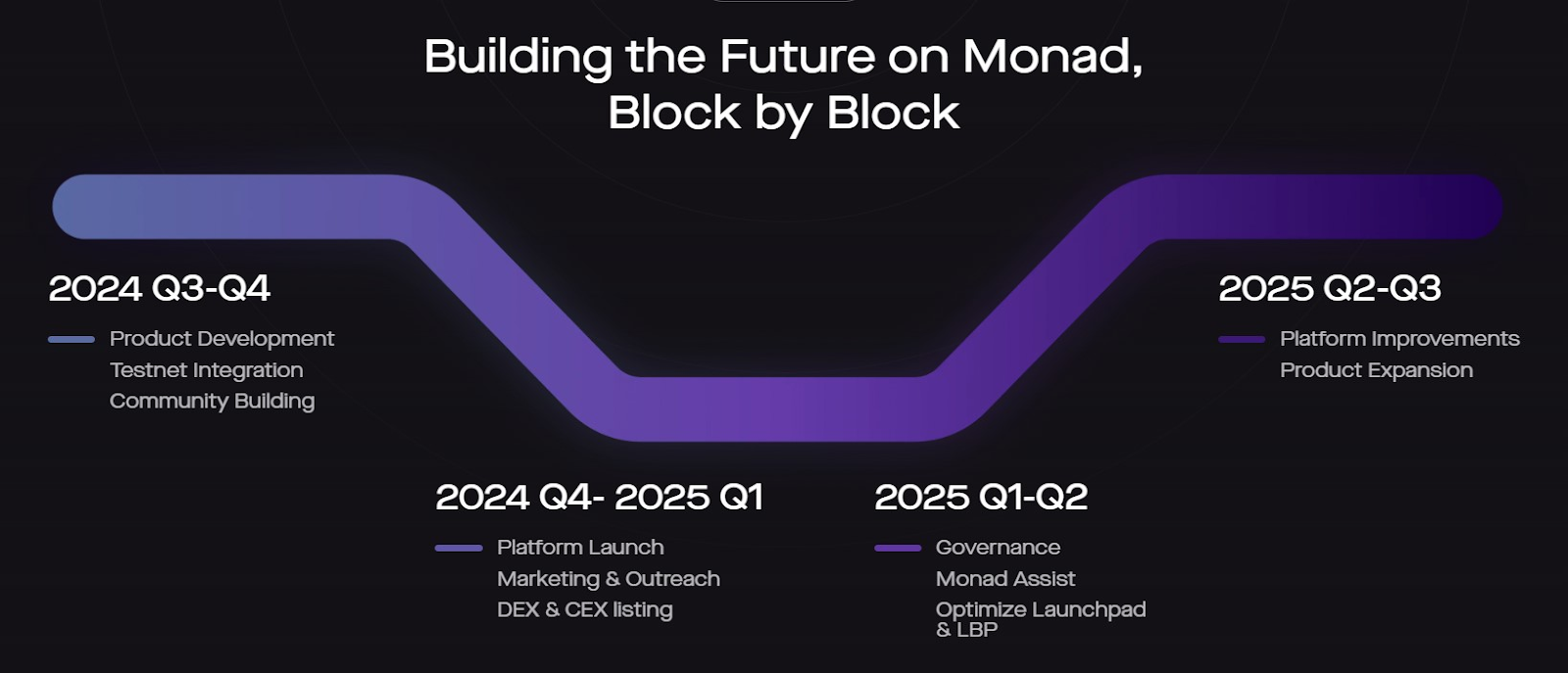Wen Monad Mainnet?
Key Takeaways
- Monad Mainnet Launch: Officially scheduled for late 2025, following the ongoing public testnet.
- Parallel EVM Technology: A Layer 1 blockchain enabling 10,000 TPS through parallel execution while maintaining full EVM compatibility.
- Massive Funding: Monad Labs has secured $244 million, with a significant $225 million round led by Paradigm, showing strong investor confidence.
- Active Public Testnet: The testnet is live with over 240 projects. Users can join to interact with dApps and test the network.
- $MON Token: The native coin, $MON, will be used for transaction fees and staking. Tokenomics and launch price are currently unknown.
The Monad Vision: Applying High-Frequency Trading Principles to the Blockchain
In a competitive field of Layer 1 blockchains, Monad has distinguished itself not just with bold performance claims, but with its fundamental redesign of the Ethereum Virtual Machine. It aims to deliver massive scalability without abandoning the extensive developer ecosystem and network effects of Ethereum.
What is Monad?

Monad is a high-performance, Proof-of-Stake (PoS) Layer 1 blockchain that is fully compatible with the EVM. Its core goal is to dramatically increase transaction speed and reduce latency, enabling a new class of decentralized applications that are impossible on current EVM-based chains.
It's important to distinguish the Monad blockchain project from other entities with the same name. This project is not related to Monad University in India or the security data platform Monad.com. The official home for the blockchain project is monad.xyz.
The project was founded in 2022 by Keone Hon, James Hunsaker, and Eunice Giarta. Hon and Hunsaker's extensive experience at Jump Trading, a leader in high-frequency trading (HFT), is the driving force behind Monad's architecture. In HFT, performance is measured in microseconds, and systems are built for massive parallel processing. They identified the EVM's sequential execution model—processing transactions one by one—as the primary bottleneck, similar to an inefficient trading system. Their solution was to re-architect the EVM from the ground up, applying the principles of low-latency, parallel systems to the blockchain.
A Technical Look Under the Hood
Monad's claim of 10,000 TPS isn't based on a single trick but on a complete overhaul of how a blockchain processes transactions, reaches consensus, and stores data.
The Power of Parallel Execution
The key innovation is the shift from sequential to parallel execution. On Ethereum, transactions in a block are processed one after another. Monad introduces optimistic parallel execution, processing many transactions at once. It assumes they don't conflict. If a conflict is detected (e.g., two transactions trying to modify the same state), the system simply re-executes the conflicting one sequentially. This is vastly more efficient, as most transactions are independent.

While the execution happens in parallel, the final state of the blockchain is identical to what it would be on Ethereum, ensuring consistency and predictability for developers. It just gets to that final state much, much faster.
MonadBFT and Asynchronous Execution
To support its high-speed execution, Monad developed MonadBFT, a custom consensus mechanism that uses pipelining. This allows different stages of the consensus process for different blocks to overlap, eliminating idle time and leading to 1-second transaction finality.
Furthermore, Monad decouples consensus from execution. The network first agrees on the order of transactions. Then, that ordered list is passed to the execution engine. This asynchronous execution gives the system more time to process transactions, enabling it to handle a much larger computational load. This entire system is supported by MonadDB, a custom database built specifically for the EVM's unique data structure.
Full EVM Compatibility: The Strategic Advantage
Despite these deep architectural changes, Monad remains 100% EVM bytecode compatible. This is a critical advantage. Any smart contract or dApp running on Ethereum can be deployed on Monad without any code changes. Developers can use all their favorite tools like MetaMask, Hardhat, and Foundry, eliminating the friction of moving to a non-EVM chain like Solana.
The Path to Mainnet: Your Guide to the Monad Testnet
The public testnet is the primary arena for battle-testing the network and for users to get involved ahead of the official launch.

Current Status and Mainnet Timeline
The Monad Testnet went live in February 2025 and has seen massive activity. The official Monad mainnet launch date is targeted for late 2025.
How to Get Started on the Testnet
- Set up a Wallet: Use a standard EVM wallet like Backpack
. - Add the Network: The easiest way is to visit the official portal at testnet.monad.xyz and connect your Monad wallet. For manual setup, you'll need the Monad Mainnet RPC (for testnet, it's https://testnet-rpc.monad.xyz) and other network details.
- Get Test Tokens: Use the faucet on the official portal or alternative faucets like Gas.zip to get testnet $MON tokens.
Essential Tools: Explorer and RPC
- Network Name: Monad Testnet
- RPC URL: https://testnet-rpc.monad.xyz
- Chain ID: 10143
- Currency Symbol: MON
- Block Explorer: The primary Monad explorer is https://testnet.monadexplorer.com. Other options like Monadscan are also available.
Conclusion: A New Contender in the Layer 1 Arena
Monad is not just another "Ethereum killer." It is a fundamental reimagining of the EVM that aims to offer the performance of alternative L1s like Solana with the full compatibility and network effects of Ethereum. By solving the parallel execution challenge, Monad removes the need for developers to choose between speed and the familiar EVM environment.
If Monad delivers on its promises, it could significantly disrupt the blockchain landscape, attracting developers and users from both alternative L1s and Ethereum's Layer 2 ecosystem. With its elite team, massive funding, and passionate community, Monad is poised to be a dominant force in the next chapter of decentralized applications.
Learn more about Backpack
Exchange | Wallet | Twitter | Discord
Disclaimer: This content is presented to you on an “as is” basis for general information and educational purposes only, without representation or warranty of any kind. It should not be construed as financial, legal or other professional advice, nor is it intended to recommend the purchase of any specific product or service. You should seek your own advice from appropriate professional advisors. Where the article is contributed by a third party contributor, please note that those views expressed belong to the third party contributor, and do not necessarily reflect those of Backpack. Please read our full disclaimer for further details. Digital asset prices can be volatile. The value of your investment may go down or up and you may not get back the amount invested. You are solely responsible for your investment decisions and Backpack is not liable for any losses you may incur. This material should not be construed as financial, legal or other professional advice.



